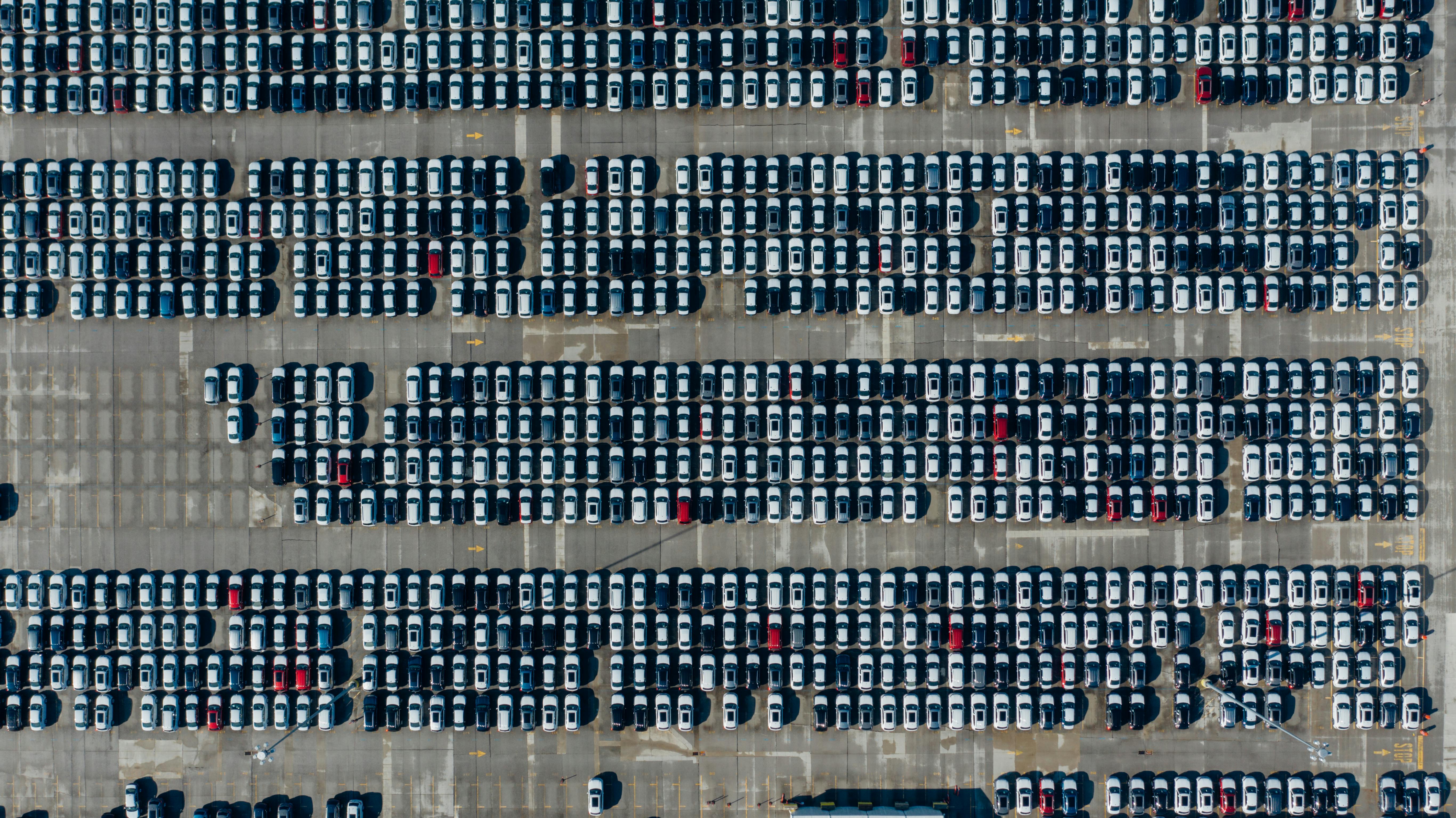Distillation columns are an essential part of many industrial processes, used to separate components from a liquid mixture. They work by taking advantage of the different boiling points of the components in the mixture, and have been used for centuries to produce alcoholic beverages, essential oils, and other products. In this article, we’ll take a look at how distillation columns work and explore the different types of distillation that can be achieved.A distillation column is a type of industrial equipment used to separate a liquid mixture into its component parts, or fractions, based on the differences in their volatilities. It is a key piece of equipment in the oil and petrochemical industries, as well as other chemical processing industries.
How Does a Distillation Column Work?
A distillation column is an essential piece of equipment used in the process of separating two or more liquids through evaporation and condensation. This process, known as distillation, is used to purify liquids and remove impurities, such as unwanted compounds or contamination. The distillation column consists of several trays and plates that allow the different components to be separated based on their boiling points. The liquid mixture is heated and vaporized at the bottom of the column, and then rises up through the trays and plates. As it rises, the different components separate out, with the lighter components evaporating first and rising to the top. As these lighter components reach cooler temperatures near the top of the column, they condense back into a liquid state and are collected. The heavier components remain in a liquid state throughout the process, flowing down from tray to tray until they reach the bottom of the column where they are also collected. This process can be repeated multiple times to further purify the liquids or increase yields.
The efficiency of a distillation column can be affected by many factors, such as temperature, pressure, reflux ratio, feed rate, tray spacing, etc. By adjusting these variables during operation it is possible to optimize performance for each application. Additionally, different materials can be used for construction depending on what type of liquids are being distilled and what purity levels are desired. In some cases, special coatings may also be applied to protect against corrosion or other damage caused by certain chemicals or environmental conditions.
Distillation columns are widely used in many industries for processes such as fractional distillation of crude oil into gasoline and other products; ethanol production; water purification; chemical production; and many more applications.
Types of Distillation Columns
Distillation columns are essential pieces of equipment used in the chemical and petroleum industries to separate mixtures of liquids or vapors. The different types of distillation columns are designed to meet the specific needs of a variety of applications. Each type has specific features that make it suitable for a particular purpose. The most common types of distillation columns are packed, plate, and bubble-cap columns.
Packed columns are one of the oldest types of distillation columns and are still widely used today. They consist of a vertical column filled with packing material such as ceramic rings or metal mesh that provides a large surface area for the vapor-liquid contact needed in distillation. Packed columns are relatively inexpensive and easy to operate, making them ideal for smaller scale operations.
Plate columns consist of multiple horizontal plates stacked on top of each other in the column. These plates contain perforations or bubble-cap trays that allow vapor-liquid contact as the liquid flows through them. Plate columns are more efficient than packed columns, but they require more maintenance and can be more expensive to install and operate.
Bubble-cap columns are similar to plate columns but use bubble caps on each plate instead of perforations or trays. The bubble caps contain small openings that allow vapor-liquid contact as the liquid flows through them. Bubble-cap columns offer higher efficiency than packed or plate columns, but they also require more maintenance and can be more expensive to install and operate.
Design Considerations for Distillation Columns
Distillation columns are widely used in many chemical processes for separating components from a liquid solution. Designing a distillation column requires careful planning and consideration to ensure that it is properly sized and configured to meet the requirements of the process. To achieve this, there are several important design considerations that must be taken into account when designing a distillation column, including the type of feed, the type of reflux ratio, the number of stages, and the type of packing used.
The type of feed used in a distillation column is an important consideration as it determines how much of each component is present in the feed stream. Depending on the desired separation, different types of feeds may be used such as azeotropic feeds or multi-component feeds. Additionally, the reflux ratio should be considered when designing a distillation column as it determines how much vapor is recirculated back into the system and affects both separation efficiency and energy consumption.
The number of stages in a distillation column also plays an important role in its design. The number of stages determines how many times the vapor is re-condensed before it exits from the top of the column and affects both separation efficiency and energy consumption. The type of packing used can also have an effect on performance as different types have different characteristics such as surface area and void fraction which can affect mass transfer rate and efficiency.
Finally, other design considerations such as heat exchanger configuration, control strategies, valve sizing, etc., should also be taken into account when designing a distillation column to ensure that it operates safely and efficiently. It is also important to consider safety measures such as pressure relief valves or other safety devices to protect against overpressure conditions that could occur during operation.
Reflux and Side Streams in Distillation Columns
Distillation columns are used in a variety of industries to separate liquids from one another. The process of distillation requires two main components: reflux and side streams. Reflux is a process by which the vaporized liquid from the top of the column is condensed and then returned to the bottom of the column for further distillation. This helps to improve the efficiency of the system and reduce energy costs. Side streams are also important in distillation, as they can be used to take off different components of the mixture at different points in the column, allowing them to be processed or collected separately.
Reflux is usually created by a condenser placed at the top of a distillation column. The condenser captures some of the vaporized liquid from the top of the column and then cools it down before returning it back to the bottom of the column. This helps ensure that only components that have been completely vaporized make it back into circulation, improving efficiency and reducing energy costs. In addition, reflux can also help control boiling point elevation within a system, allowing for more precise separation between components in a mixture.
Side streams are also an important part of any distillation system. As mentioned previously, side streams can be used to take off different components of a mixture at various points along a distillation column. This allows those components to be processed separately or collected for later use. Additionally, side streams can also be used as an outlet for excess vapor pressure within a system, ensuring that certain components do not become over-concentrated in one area within a distillation column.
Overall, reflux and side streams are essential components in any successful distillation system. They help improve efficiency by condensing vapors before they escape from the system, as well as providing outlets for excess vapors or taking off specific components from mixtures for further processing or collection purposes. Without these two elements working together, efficient distillation would not be possible

Pressure Drop and Heat Transfer in a Distillation Column
Distillation columns are commonly used in industrial processes to separate and purify liquids. The process involves the heat transfer of a liquid mixture from one stage of the column to the next, with each stage relying on a pressure drop to force the liquid to flow. The pressure drop is an important factor in determining the efficiency of heat transfer throughout the column, as it affects how much energy is required for vaporizing and condensing processes. Heat transfer is also affected by factors such as temperature difference between stages, surface area, and type of packing material used in each stage.
The pressure drop across a distillation column is determined by the height difference between stages and by any resistance created by the packing material used in each stage. The higher the height difference between stages, or the more resistance created by packing material, will result in a higher pressure drop. This increased pressure drop allows for better heat transfer within each stage. On the other hand, if there is not enough pressure drop between stages, energy will be wasted as heat energy does not escape out of each stage efficiently.
Heat transfer within distillation columns occurs primarily through convection and radiation. Convection occurs when hot vapors rise through each stage of the column while cooler vapors descend downwards due to gravity. As this process takes place, heat energy is transferred from one stage of the column to another depending on their temperatures. Radiation also plays an important role in transferring heat energy within each stage as well as between adjacent stages; however, radiation typically has less effect on overall heat transfer compared to convection due to its more limited range of influence.
In conclusion, pressure drop and heat transfer play important roles in determining the efficiency at which a distillation column operates. The right combination of these two factors allows for efficient separation and purification of liquids within a distillation column with minimal energy input required for vaporizing and condensing processes.
Tray and Packing Selection for a Distillation Column
The selection of trays and packing for a distillation column is an important factor in ensuring the efficient operation of the column. The type of tray and packing used will depend on the feedstock, the types of products being separated, and the operating conditions. For example, when separating different types of hydrocarbons, the tray and packing used must be able to handle high temperature and pressure. It is also important to choose trays that are compatible with the feedstock and have adequate capacity to allow for efficient separation. The choice of tray also depends on factors such as cost, maintenance requirements, and availability.
When selecting packing for a distillation column, it is important to consider factors such as surface area, void fraction, thermal conductivity, pressure drop, fouling resistance, and corrosion resistance. Different types of packings can be used in a distillation column such as structured packing or random packing. Structured packings are usually more expensive but offer higher efficiency due to their larger surface area. Random packings are cheaper but have lower efficiency due to their lower surface area. It is important to select a type of packing that is suitable for the application in order to ensure efficient operation.
The selection of trays and packing for a distillation column is an essential part of designing a successful distillation system. It is important to select materials that are suitable for the application in order to ensure efficient separation of components from each other. The correct selection will ensure safe operation at optimal performance levels while keeping costs down.
Control of a Distillation Column
Distillation columns are an essential part of many industrial processes, which separate and purify a variety of components. In order to do this effectively and efficiently, it is necessary to have a reliable control system in place. The control system works by regulating the amount of heat being applied to the column, thus controlling the rate of vaporization and condensation. This in turn will affect the concentration of components in the output stream.
The control system also needs to account for changing conditions such as changes in feedstock composition, ambient temperature, and other external factors that can impact distillation performance. To achieve this, operators need to deploy a number of strategies such as temperature profiling and manipulating reflux ratios. Temperature profiling involves controlling the temperature at each tray along the column in order to ensure optimal product purity and throughput. Manipulating reflux ratios involves adjusting the ratio of liquid that is returned back into the column versus what is drawn off from it.
In addition to these strategies, operators also need to be mindful of other considerations such as energy efficiency, safety, and reliability when setting up their control system for a distillation column. A well-designed system should be able to respond quickly and precisely to changing conditions so that product quality can be maintained while avoiding any unnecessary losses due to over-refluxing or over-heating. By paying attention to all these factors, operators can ensure that their distillation columns are running as effectively as possible with minimal energy consumption and downtime.

Conclusion
Distillation columns are an essential part of the distillation process, and their job is to separate different compounds from a liquid mixture. Using a combination of heat and pressure, they are able to separate the components in the mixture one at a time, allowing them to be collected separately. Distillation columns come in many shapes and sizes, and they can be used for a variety of different applications. They can be used to produce gasoline, ethanol, methanol, and even pure water. The use of distillation columns is an important part of many industrial processes, and their importance cannot be overstated.
Distillation columns are highly efficient devices that are able to separate out components from liquids quickly and accurately. By using heat and pressure in combination with other techniques such as refluxing or fractional distillation, the components can be separated out one at a time with great precision. They are an important tool for those working in the chemical industry or any other fields where separation of different compounds is necessary.
In conclusion, distillation columns are an essential tool for anyone working with liquids that need to be separated into their individual components. They have been used for centuries as an effective way to achieve this separation quickly and accurately. Their versatility makes them suitable for a variety of applications, from producing gasoline to making pure water. With their ability to separate out individual compounds efficiently and accurately, distillation columns will continue to be an invaluable tool for those working in the chemical industry or any other field where separation is needed.

